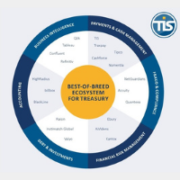Financing a Livable World
11-2-2020 | by Aastha Tomar
If Greta Thunberg doesn’t inspire us, breathing some Delhi air may. While these might have been in news recently, more of this discussion is on social media rather than real action.
Sustainability has thus mostly been associated with activist connotation and, less with real, on-ground impact.
As we evaluate on-ground actions, investments towards such actions become first step and these need to make “financial sense” for investors to flock in. That’s when, I believe, that traditional financial acumen fails us. The foundational elements of investment rationale shall make such investment difficult. Let’s evaluate how –
- It’s all about ROI in purely Financial Terms: All financial evaluations are about monetary returns. Such approach is more likely to make Investing in sustainability related projects unattractive
- Organizations as going concern: While some projects have started evaluating impact of climate change, organizations are often considered as going concern without climate change & its impact. It’s it a time that we start considering some serious impact of climate change while evaluating cash flow and hence the project IRR.
Of all, these foundation elements make investment capability of capital markets to adapt in disruptive situations, like we are facing now for climate change, difficult. Financial markets, in its prevailing methods, would only consider climate change once its impacts are visible, but that, I guess, would be too late.
Having worked in Debt capital markets (DCM) my first reaction was to search of how DCM is contributing in sustainability and this led me to know about a beautiful concept of green bonds. The bond by their very name “green bonds” click into mind that there is something related to sustainability in it.
Green bond principles, intended to provide a framework for debt funding for projects which shall contribute to sustainability, is a step in the right direction. It has been framed with four core pivotal elements –
- Use of Proceeds
- Process for Project Evaluation & Selection
- Management of Proceeds
- Reporting
It’s the use of proceeds which sets apart green bonds from regular bond issues. The eligible projects for such issuance should be from around ten categories including renewable energy, energy efficiency, pollution prevention and control, green buildings etc.
A cumulative $580 billion of green bonds were sold through 2018, according to Bloomberg New Energy Finance. According to climate bond initiative in quarter 3 of 2019 itself USD 6.2 bn worth green bonds were issued worldwide, which is 87% up YoY. There were 139 issuers from 32 countries. There are many issuers joining the race and many nations as well. European nations being the ones taking the lead.
Though figures for green bonds may seem encouraging when we see them standalone but when compared to the global bond markets which are more than USD 100 trillion market, green bond market is hardly a fraction of it. Europe alone needs about 180 billion euros ($203 billion) of additional investment a year to achieve 2030 emission targets set by the European Union in the 2015 Paris Agreement on climate change.
In nutshell, green finance initiatives are steps in right direction but need more muscle and speed to enable actions on ground.
What are your thoughts?
FX & Derivatives | Debt Capital Markets | MBA Finance
Electrical Engineer | Sustainability












